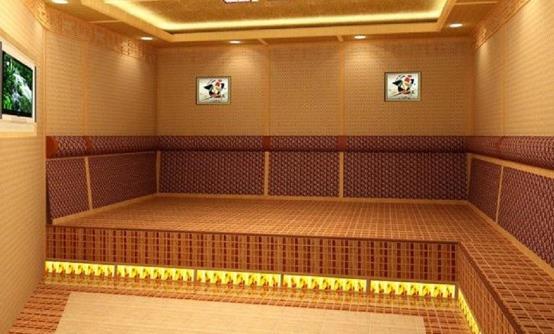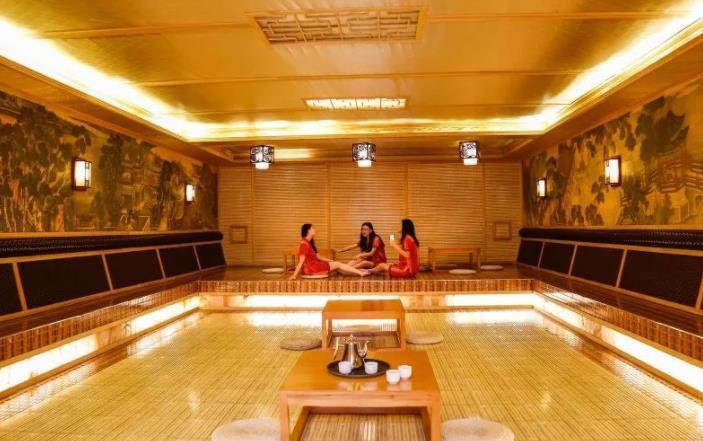Sauna Culture
has long been a cornerstone of wellness practices, particularly in Scandinavian countries, where it is deeply embedded in daily life and cultural traditions. Originating thousands of years ago, sauna culture has evolved significantly, influencing global wellness trends and continuing to offer profound health benefits.### Historical Roots of Sauna Culture
The history of sauna culture dates back to ancient times, with the earliest forms of saunas appearing in Finland. The traditional Finnish sauna, known as the
sauna
, was not merely a place for bathing but also a social and spiritual haven. Early saunas were simple pits dug into the ground and lined with stones, heated by burning wood. These stones, known assauna stones
, absorbed heat and were used to generate steam when water was poured over them.In Finnish culture, the sauna has always held a revered place. It was a space for both physical cleansing and mental relaxation. Historically, it was common for Finnish families to gather in the sauna for communal bonding and to escape the harsh winter conditions. This cultural practice highlighted the sauna’s role as a social and therapeutic space, a tradition that continues today.
### The Science Behind Sauna Health Benefits
Modern saunas have evolved from these rudimentary origins into sophisticated wellness tools. Research has shown that regular sauna use offers numerous health benefits. One of the primary benefits is its impact on cardiovascular health. The high heat of a sauna causes the blood vessels to dilate, improving circulation and reducing blood pressure. This effect mimics the benefits of moderate physical exercise and can contribute to better heart health.
Another significant benefit of sauna use is its ability to promote relaxation and reduce stress. The heat from the sauna induces a deep state of relaxation, helping to alleviate muscle tension and enhance overall well-being. The endorphins released during a sauna session can improve mood and provide a natural sense of euphoria, making the sauna an excellent tool for stress management.

### Modern Sauna Types and Technologies
Today’s saunas come in various forms, each offering unique features and benefits. The traditional Finnish sauna remains popular, characterized by its high temperatures and low humidity. However, other types of saunas have emerged, including the
infrared sauna
and thesteam room
.Infrared saunas use infrared light to heat the body directly rather than heating the air around it. This method can penetrate deeper into the skin and muscles, offering a different set of benefits. Infrared saunas are known for their ability to promote detoxification, as the heat stimulates sweat production and helps the body eliminate toxins.
Steam rooms, on the other hand, use steam to create a high-humidity environment. This can be beneficial for respiratory health, as the moist air can help open up airways and improve breathing. Steam rooms also provide similar relaxation benefits as traditional saunas, though the experience and effects differ due to the humidity.
### Incorporating Sauna Culture into Modern Wellness Routines
Integrating sauna culture into modern wellness routines can enhance overall health and quality of life. For individuals seeking to experience the benefits of sauna use, it is essential to understand how to use the sauna safely and effectively.

Firstly, it is crucial to stay hydrated before and after a sauna session. The high temperatures can cause significant fluid loss through sweating, so drinking plenty of water is necessary to prevent dehydration. It is also advisable to limit sauna sessions to 15-20 minutes to avoid overheating and to listen to your body’s signals.
In addition, combining sauna use with other wellness practices can amplify its benefits. For instance, incorporating relaxation techniques such as meditation or deep breathing while in the sauna can enhance the stress-relieving effects. Regular physical exercise, a balanced diet, and adequate sleep further contribute to the overall benefits of sauna use.
### Cultural Significance and Modern Trends
The cultural significance of sauna culture extends beyond its health benefits. It represents a lifestyle that values relaxation, communal bonding, and self-care. In contemporary society, saunas have become a symbol of luxury and well-being, often featured in spas and wellness centers around the world.
The modern trend of wellness tourism has also embraced sauna culture, with many destinations offering luxurious sauna experiences as part of their services. From hot springs resorts to high-end spas, the sauna has become a sought-after feature for those seeking relaxation and rejuvenation.
### Conclusion

In summary,
sauna culture
is a rich and multifaceted tradition with deep historical roots and significant modern relevance. The evolution of sauna practices from ancient times to today reflects their enduring appeal and effectiveness in promoting health and well-being. By understanding the history, benefits, and various types of saunas, individuals can make informed choices about incorporating sauna use into their wellness routines.Embracing sauna culture not only offers physical health benefits but also connects individuals with a time-honored tradition of relaxation and self-care. As wellness trends continue to evolve, the sauna remains a valuable tool for enhancing overall quality of life.
---
转载请注明:成都会所桑拿-四川成都休闲桑拿推荐论坛! » 武汉休闲 » **The Evolution and Health Benefits of Sauna Culture: A Deep Dive into Its Historical Roots and Modern Relevance**
版权声明
本文仅代表作者观点,不代表成都休闲网立场。
本文系作者授权发表,未经许可,不得转载。




























